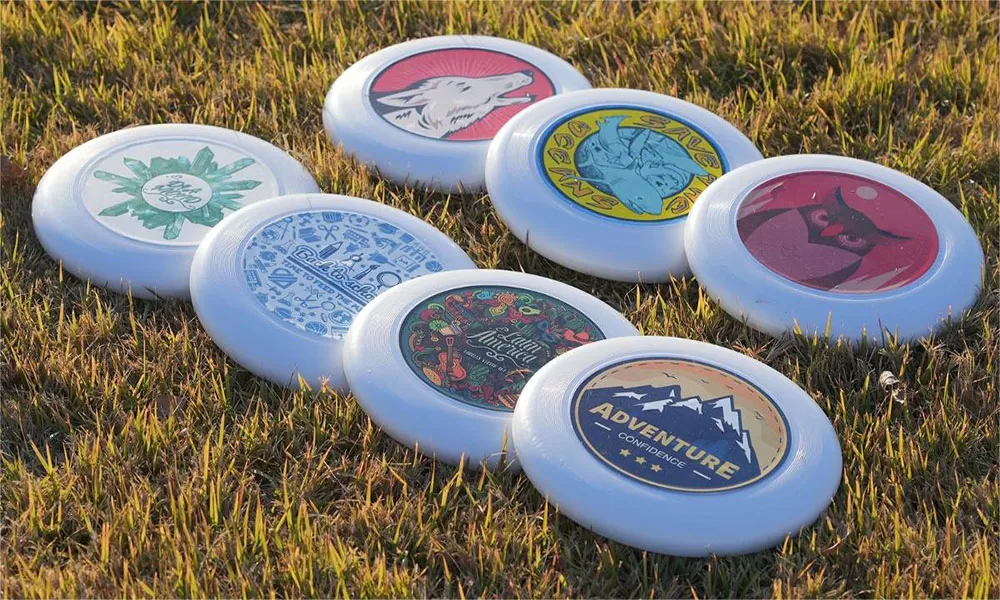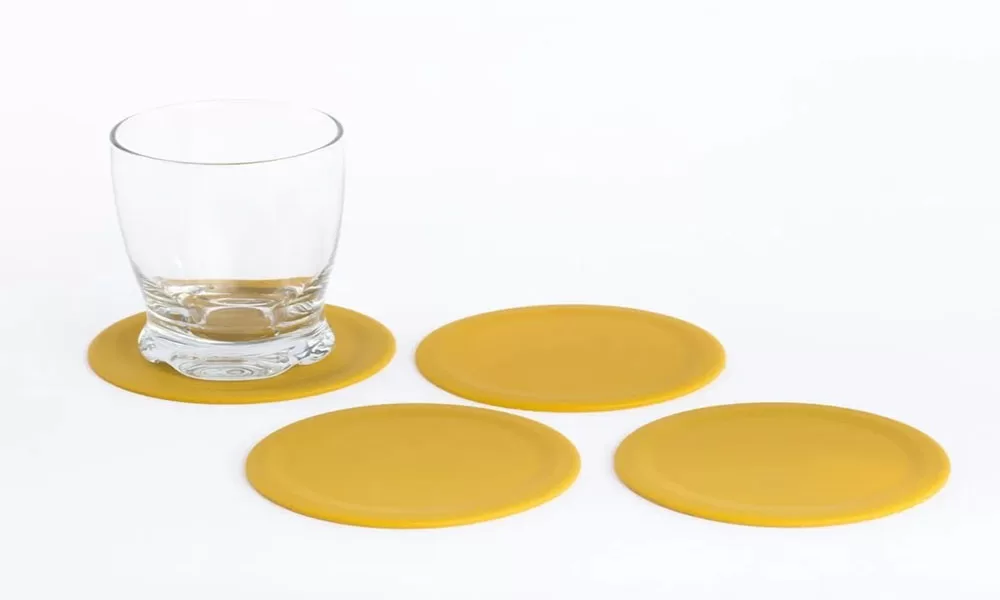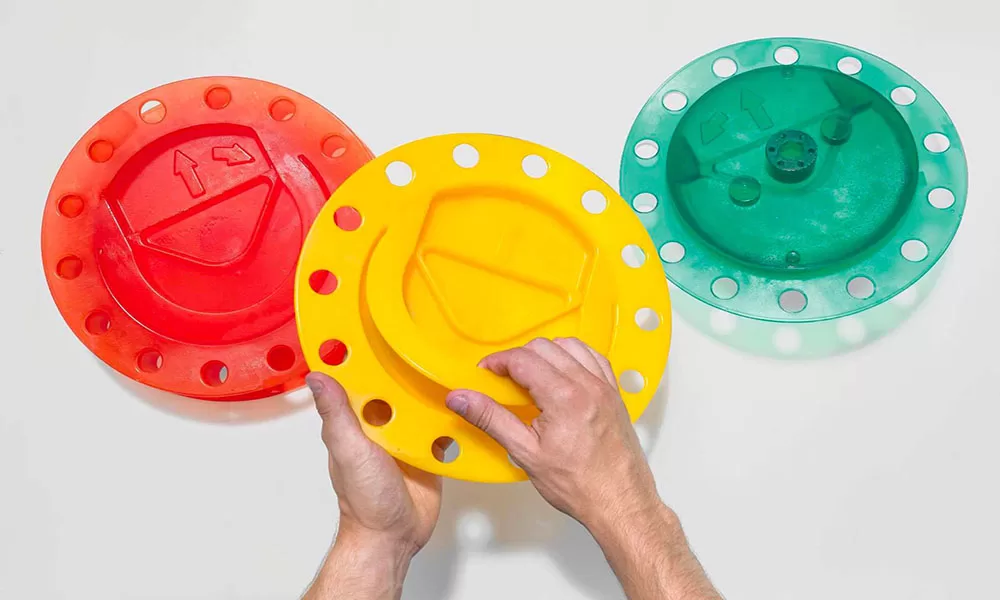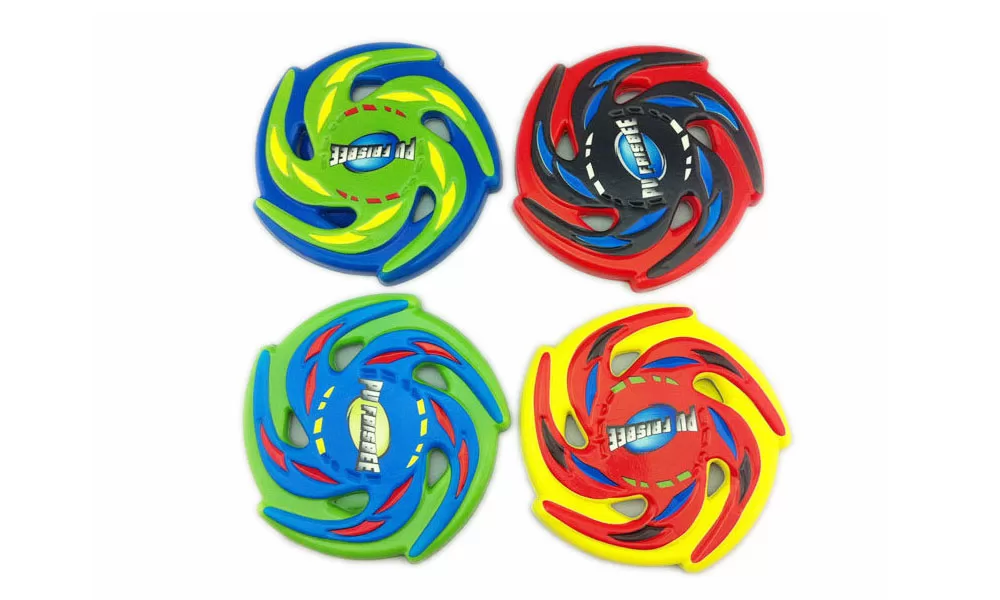Frisbee is a popular outdoor leisure toy, and its appearance design and flight stability are important factors affecting its popularity. Today, we would like to introduce the polyurethane(PU) frisbee produced by our factory. In terms of design, it usually adopts a round or flying disc-like shape with a smooth surface and colorful colors, making it easier to be seen in flight. As for flight stability, the lightness and softness of polyurethane material make the discs better able to withstand airflow and wind speed changes during flight, thus maintaining a stable flight trajectory.

Properties and Applications of Polyurethane Materials
Polyurethane is a polymer material with a wide range of applications, which has many excellent characteristics, such as abrasion resistance, corrosion resistance, high-temperature resistance, strong cold resistance, good flame retardancy, and high plasticity.
- The polyurethane material has good elasticity and wear resistance, so it is often used to make automobile parts such as car seats, tires, suspension systems, and so on. It is also widely used in the production of sports shoes, work shoes, and gloves.
- Low density and light weight make them widely used in making air filters, heat insulation materials, insulation materials, and sponges.
- The corrosion resistance is very good, which makes it widely used for making chemical equipment, pipes, valves, and paints.
- Have good flame-retardant properties and are widely used in making furniture, construction materials, insulating materials, and ships.
- Highly malleable and can be processed and customized according to different needs, so they are widely used to make molds, seals, contour parts, and sound insulation materials.
The Design Principles and Common Shapes of Frisbee
The design principles of Frisbee include symmetry, single-sided projection, flat design, and bright colors, and common shapes include round, disc, and tortoise shells. These design principles and shapes can improve the flight performance and stability of the disc, making it more suitable for a variety of sports and recreational activities.
Design Principles
- Symmetry: The left and right sides of the disc should be symmetrical to ensure that it remains stable in flight and can be more easily controlled and adjusted.
- Single-sided raised: The surface of the disc should be single-sided raised so that it can better resist air resistance and wind speed changes when flying and maintain a stable flight path.
- Flat design: The disc usually adopts a flat design, which can reduce flight resistance and improve its flight distance and speed.
- Color: Frisbee usually uses bright colors and patterns so that it can be more easily seen in the air.
Common Shapes
- Round: The round disc is the most common shape, it usually has good balance and flight stability and is easy to control.
- Disc: Discs are usually flat and have a flat surface, making them especially suitable for long-distance flying and tricks.
- Turtle shell: The surface of a turtle shell disc has many protrusions, which makes it better able to withstand air flow and wind speed changes while flying, thus maintaining a stable flight path.
Effect of Appearance Design on Polyurethane Flying Disc
The influence of appearance design on polyurethane discs mainly includes shape, color, texture, size, and weight. A good appearance design can improve the flying performance and attractiveness of the disc, making the polyurethane disc a more popular sporting equipment.
- Shape: The shape directly affects its flight stability and flight distance. The shape of a polyurethane disc should be symmetrical and raised on one side to ensure that it remains stable in flight and can better resist air resistance.
- Color: Color can affect its visibility and attractiveness in the air. Bright colors and eye-catching patterns can make polyurethane discs more visible and easier for players to track and catch in the air.
- Texture: Polyurethane material has very good elasticity and flexibility, this characteristic can make the disc cushion the impact when landing, reducing damage and wear. In addition, if the surface of the Frisbee is attached to a grain or pattern, it will increase its friction and grip, making it easier to control and grasp.
- Size and weight: The size and weight of a polyurethane disc directly affect its flight distance and speed. Smaller discs are easier to handle and throw, while heavier discs can fly farther and are more stable. Therefore, there is a trade-off between size and weight when designing polyurethane discs to meet the needs of different players.
The Effect of Different Designs on Flight Stability
Appearance design has a very important impact on the flight stability of polyurethane discs. We need to weigh various factors and choose the right design solution to achieve the best flight performance and stability.
- Smaller diameter, thicker disc: This design increases the weight and strength of the disc, making it more stable and able to withstand greater flight resistance. However, the thickness of the disc will make it fly with greater air resistance, thus reducing its flight distance.
- Larger diameter, smaller thickness of the disc: This design can reduce the air resistance of the disc so that it can fly farther. However, the smaller thickness of the disc will make it more vulnerable to lateral wind interference during flight, thus reducing its stability.
- Symmetrical shape disc: This design can make the disc keep balance and stability in flight and reduce its interference from lateral wind. However, if the symmetrical axis is too short or too long, it will make the disc produce a large rotational moment in flight and affect its stability.
- The asymmetric shape of the disc: This design can make the disc in flight produce rotation, increasing its flight stability and flight distance. However, if the asymmetric design is unreasonable or too exaggerated, it may make the disc produce too many rotational moments in flight and reduce its stability.
Effect of Weight Distribution on Flight Stability
The weight distribution of a polyurethane disc is critical to its flight stability. We need to carefully consider the location of the center of gravity of the disc and manufacture the disc to ensure proper weight distribution to ensure optimal flight stability.
- Forward center of gravity: If a disc has a forward center of gravity, then it will be more stable. This is because, during flight, the air exerts more force on a forward-facing disc, which can make it more stable. However, this will also make the disc fly a shorter distance because the disc needs more force to fly forward.
- Backward center of gravity: If a disc has a backward center of gravity, then it will be more susceptible to lateral wind interference, which can lead to instability. At this point, the disc may fly longer, but it requires more force to maintain balance.
- Balanced center of gravity: Ideally, a polyurethane frisbee’s center of gravity is located in its center, which ensures that it remains balanced and stable during flight. This will also allow the disc to fly the longest distance and require the least amount of force to keep the flight stable.

The Effect of Disc Surface Treatment on Flight Stability
Disc surface finish has an effect on both flight stability and flight distance. A smooth surface helps to improve stability and flight distance, while a surface with grooves can increase the rotation effect and improve flight distance.
- Smooth surface: A disc with a smooth surface can reduce air resistance, thus improving flight stability and flight distance. This is because a disc with a smooth surface can glide through the air more easily, reducing the interference of drag on its movement.
- Rough surface: Compared with a smooth surface, a disc with a rough surface will experience more air resistance and therefore may have less flight stability. However, at higher wind speeds, discs with rough surfaces will catch the wind more easily and thus fly longer distances.
- Surface with grooves: Discs with grooves on the surface can reduce air resistance and create rotation in the air more easily. This rotation can help the disc to fly steadily and may also fly farther.
- Irregular surface: If the surface of the disc is irregular, such as with bumps or cracks, it may lead to unstable flight. This is because irregular surfaces can cause more turbulence in the air, which can interfere with the disc’s flight path.
Aerodynamics of Frisbee
The aerodynamics of a disc involves factors such as lift, stability, drag, and leading edge effects. Factors such as the shape, weight distribution, and surface finish of the disc can affect its aerodynamic performance.
- Lift: Lift is the basic principle of Frisbee flight. When a disc is thrown, it generates lift in the air so that it can stay in the air. This lift is due to the shape of the disc and the interaction of the leading edge with the air. The shape of the disc causes the air to flow at an increased rate above it and a decreased rate below it, resulting in an upward lift.
- Stability: The stability of the disc depends on its rotation and shape. When the disc is thrown, it rotates, which makes the air flow more stable and generates additional lift. Also, the shape of the disc will affect its stability. A good design should be able to make the disc rotate more steadily and produce less disturbance to the airflow.
- Drag: Drag is the obstructive force of the air on the movement of the disc. When the disc flies, it rubs against the air and slows down as a result. The shape and surface smoothness of the disc will affect the amount of drag. A good design should be able to make the surface of the disc as smooth as possible and reduce the effect of drag.
- Leading edge effect: The leading edge effect is when the air flows over the leading edge of the disc, it will create a stronger airflow. This airflow will make the disc more stable and produce a greater lift on it. The shape of the disc and the design of the leading edge will affect the size of the leading edge effect.
Flight Stability Test Methods and Standards
The flight stability test is an important means to evaluate the flight stability performance of the disc, The main purpose is to detect whether the disc in the air flight trajectory is smooth, square, flight height and time, and other indicators are in line with the requirements.
Test Methods
- Free flight test: Free flight test is to put the Frisbee in unrestricted flight test. This test method needs to be conducted in an open field to ensure that the flying of the disc is not obstructed or disturbed in any way. The test needs to record the flight distance, flight height, flight time, and other data to assess the stability of the disc.
- Static stability test: Static stability test refers to the test of the disc in an environment without wind. The test requires fixing the disc at a specific position and applying force to it to simulate different flight conditions. The test data is used to analyze the stability performance of the disc under different conditions to assess its applicability.
- Dynamic stability test: Dynamic stability test refers to the test of the disc in a windy environment. The test needs to be conducted in an open field to ensure the stability of the wind. By recording the flight trajectory, flight height, flight time, and other data to assess the stability performance of the disc in different wind conditions.
Testing Standards
- PDGA Disc Rules: The Disc Rules developed by the Disc Association of America (PDGA), mainly for professional-level disc competitions, specify the size, weight, shape, and other parameters of the disc, and make specific requirements for flight stability.
- Japanese Disc Association Standard: The Japanese Disc Association developed the flight stability test standard, which mainly tests the straightness and flight height of the disc, and scores it to judge its stability performance.
- U.S. Air Force standard: The U.S. Air Force flight stability test standards, mainly test the disc’s flight distance, flight altitude, flight time and straightness, and other indicators to assess its stability performance.
Analysis of the Appearance Design & Flight Stability of Common PU Frisbee
The design and flight stability analysis of polyurethane discs is an interactive process that requires a combination of several factors, as well as practical testing and evaluation.
Common Polyurethane Frisbee Designs
- Smooth surface: Smooth surface polyurethane discs are generally coated with a smooth surface, bright colors, beautiful appearance, and good flight stability.
- Convex surface: Convex surface of polyurethane discs has a grainy and uneven design, which makes the disc more prone to wind resistance when flying and increases its flight stability.
- Barbed surface: Polyurethane discs with barbed surfaces have sharp angles or barbed-like design, this design can increase the aerodynamic characteristics of the disc and make it more stable.
Analysis of Flight Stability
- Center of gravity: The center of gravity of the disc has a great impact on its flight stability. If the center of gravity is too high or too low, it will make the disc’s flight unstable and difficult to control. Therefore, the design of the disc needs to consider the reasonableness of the center of gravity position.
- Curvature: The curvature of the disc is also a factor that affects its flight stability. If the curvature is too large or too small, it will make the flight of the disc unstable and difficult to control.
- Shape design: The shape of the disc design will also affect its flight stability. Generally speaking, the shape of the wider disc is more stable, while the shape of the narrower disc is more likely to produce a jitter and unstable flight status.
- Surface treatment: The surface treatment of the disc will also have an impact on its flight stability. For example, a surface design with bumps and depressions can increase the friction between the disc and the air, thus increasing flight stability.
Future Polyurethane Disc Design and Development Trends
The future design and development of polyurethane discs will continue to pursue higher performance and more intelligent design, while also paying more attention to sustainability and environmental protection.
- Intelligent design: Future polyurethane discs may adopt the intelligent design, which can monitor and adjust the flight status of the disc through built-in sensors and processors, thus improving flight stability and accuracy.
- New shape design: The future of polyurethane discs may appear in more new shape designs, such as polygonal, or oval, so as to expand the scope of application and flight effect of the disc.
- Sustainability: The future design and manufacturing of polyurethane discs may pay more attention to sustainability, using biodegradable materials and environmentally friendly processes to reduce the impact on the environment.

Conclusion
In the realm of outdoor leisure toys, the polyurethane Frisbee stands out for its unique design and impressive flight stability. As the world of sports equipment continues to evolve, the future of polyurethane discs promises intelligent designs, innovative shapes, and a stronger emphasis on sustainability. For enthusiasts and professionals alike, understanding these nuances can enhance the Frisbee experience, making each throw more precise and enjoyable.

